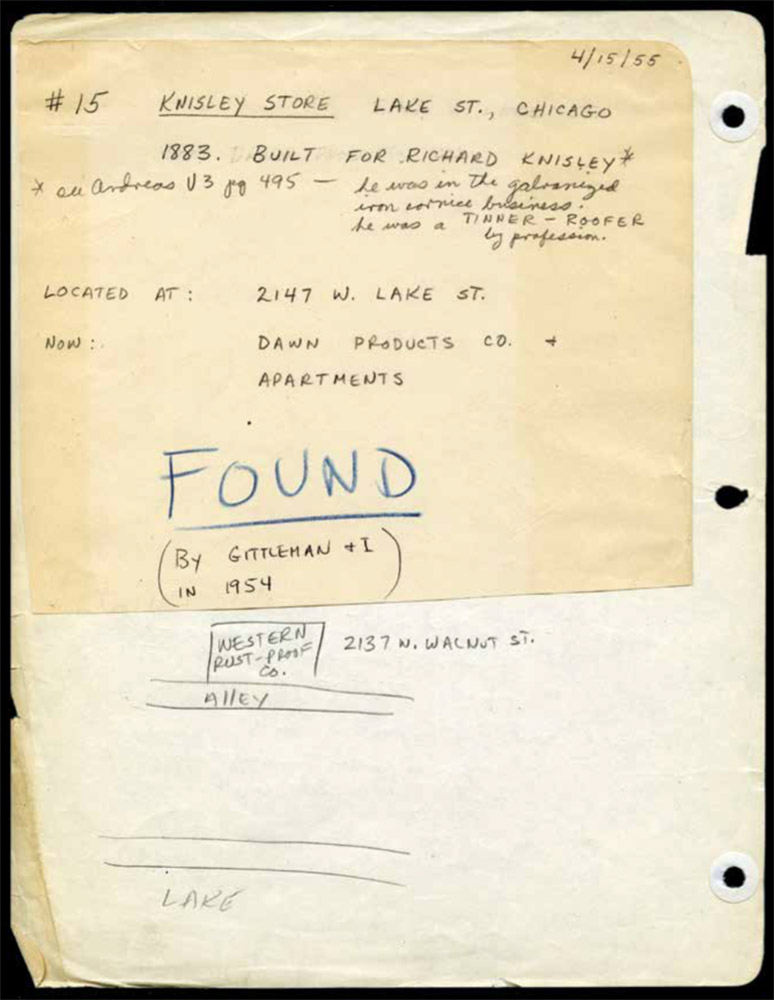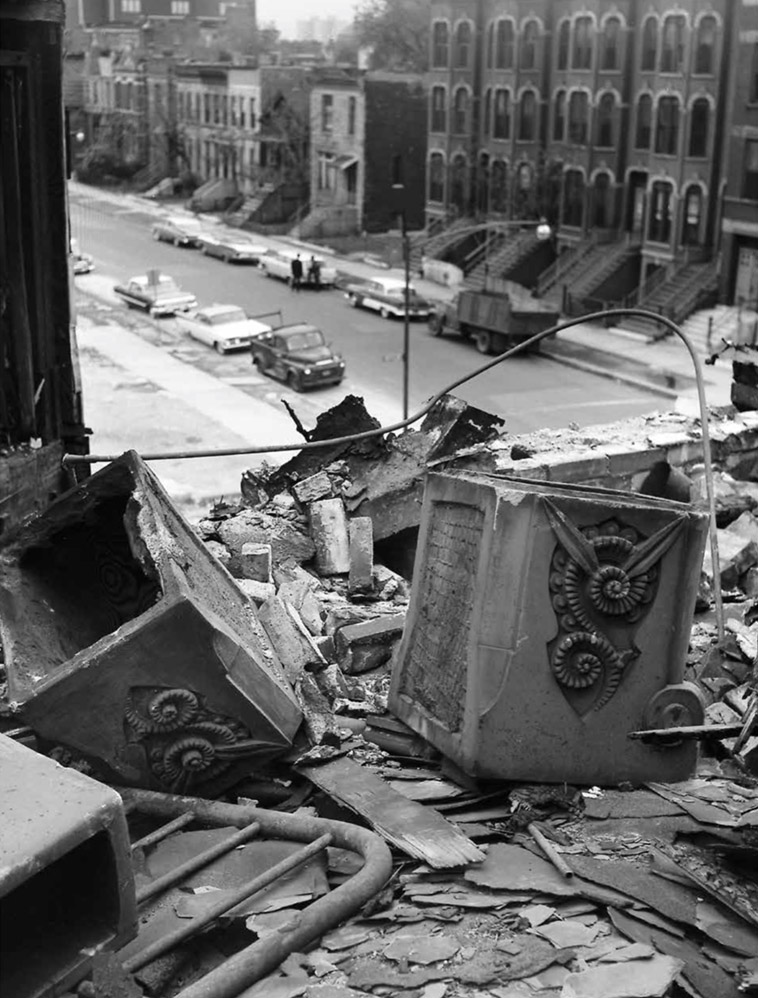Review: Richard Nickel: Dangerous Years: What He Saw and What He Wrote (original) (raw)
Photography Wed Dec 09 2015

The interior of Louis Sullivan's National Farmers' Bank.
Students of Chicago's history, photographers and preservationists have been steeped in Richard Nickel's odes to the city and his memory. But the typical discussion about Nickel is only as a legend: the man who gave his life for architecture.
Fortunately, Chicago-based City Files Press published its second book about the photographer and activist, Richard Nickel: Dangerous Years: What He Saw and What He Wrote. This book is a special opportunity to simultaneously experience Nickel's work and understand him as a person through more than 100 photographs and another 100 documents, many of them handwritten by Nickel.

A spread featuring a letter declaring Nickel's studies at the Institute of Design and an early self-portrait.

The Knisely Store and Flats, the first "lost" Adler & Sullivan building identified by Nickel.

Nickel's notes about finding the building with his friend, "Gittleman," in 1954.
 The book opens with Nickel's photograph of the remains of Adler & Sullivan's Martin Barbe House in the South Side (right). The fitting introduction sets the tone: a moment in Chicago when the city would be radically transformed by "White flight," urban renewal, and a suite of other colossal shifts.
The book opens with Nickel's photograph of the remains of Adler & Sullivan's Martin Barbe House in the South Side (right). The fitting introduction sets the tone: a moment in Chicago when the city would be radically transformed by "White flight," urban renewal, and a suite of other colossal shifts.
To that end, authors Richard Cahan and Michael Williams guide the reader through the work, offering historical and biographical notes that explain the significance of buildings, letters, and other documents. These guides render the interrelated photographs all the more impressive.
The reader learns about Nickel's take on the changing times, as well as his personal connections and the birth of Chicago's preservation movement, as in the battle for the Garrick Theater.

A spread with picket signs and a letter attempting to save the Garrick Theater.
But the photographs and letters are not all about preservation, the book also features some of Nickel's photographs of then-contemporary buildings, including documentation of the construction of the John Hancock Building, the Civic Center, and Frank Lloyd Wright's only skyscraper, Price Tower.

A spread featuring the construction of the Civic Center (l) and the Hancock Building (r).

The construction of Price Tower.
In the book's last pages are ephemera related to Nickel's fate in the Adler & Sullivan Chicago Stock Exchange Building: his family's missing person report notes, photographs of the rope Nickel brought to the building, and the affidavit of Three Oaks Wrecking foreman, John Pruitt, who describes Nickel's work process at the building. No doubt the description will be familiar to contemporary photographers who spend their time rushing around demolition sites hoping to document the end of one era and the beginning of the next.

A spread with the missing person report notes and the Pruitt affidavit.
Taken together, the elements of the book are a unique ode to the city -- and to a man who tirelessly documented it.
Richard Nickel: Dangerous Years: What He Saw and What He Wrote
by Richard Cahan and Michael Williams
Hardcover: 264 pages; 157gsm paper + flood varnish with over 250 4c images
ISBN: 978-0991541836
